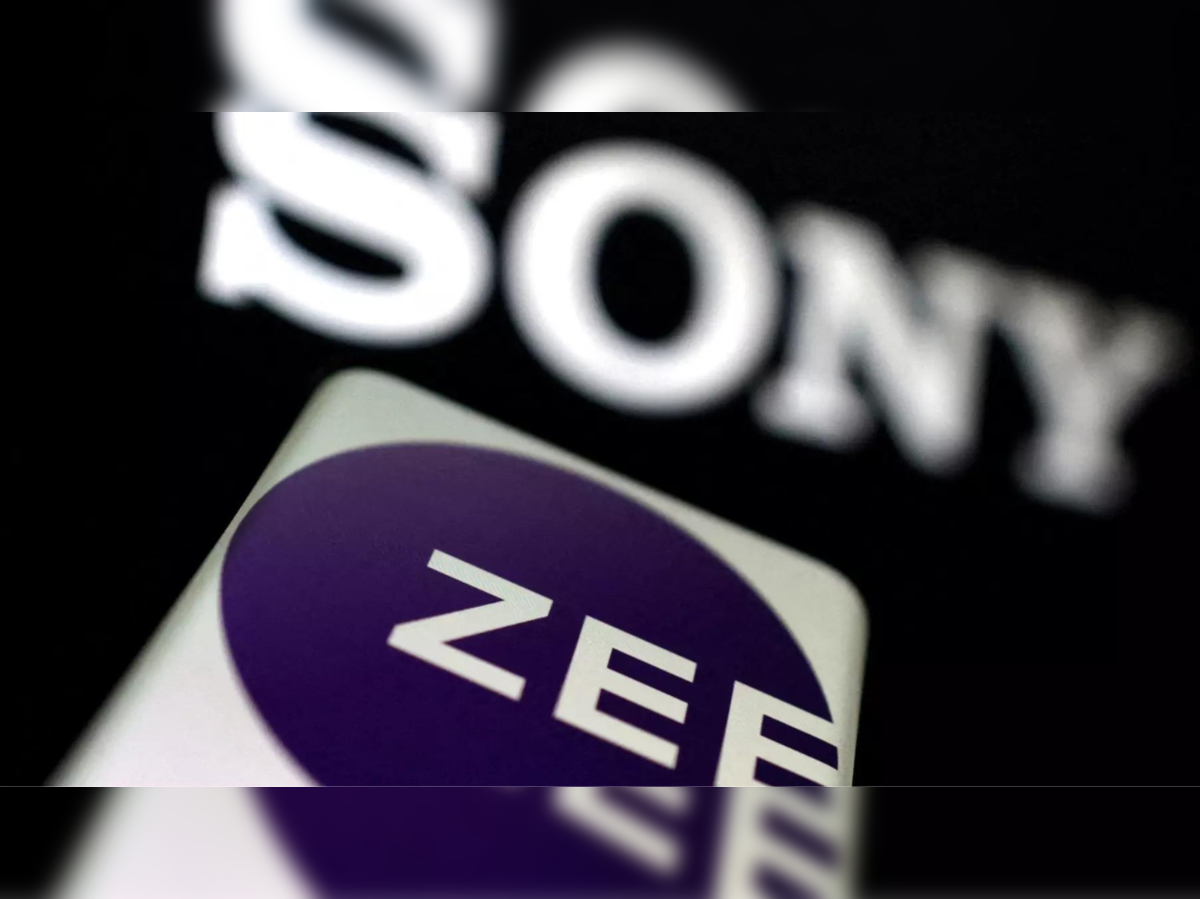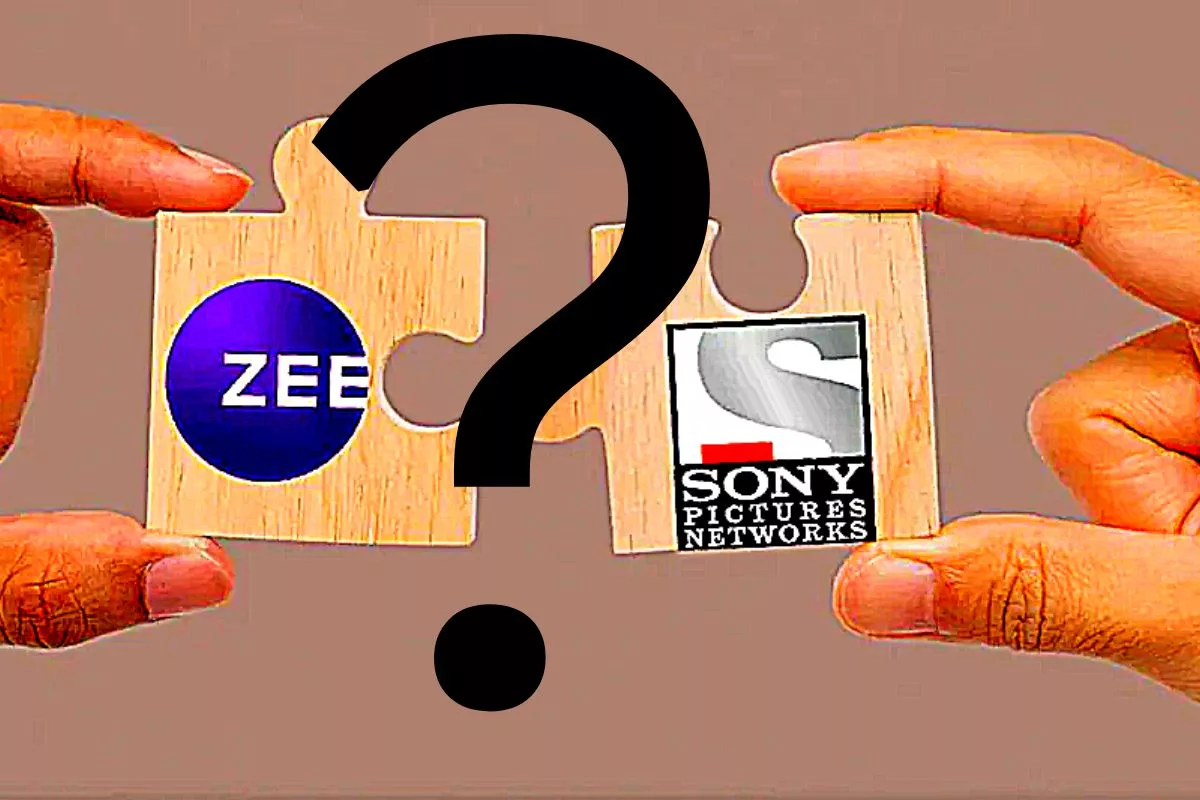Sony-Zee Merger, Twists to a Sweet Climax?
The recent approval of the long-anticipated merger between Zee Entertainment and Sony Pictures Network India marks a pivotal moment in the history of both companies. This alliance, which has been granted the green light by the National Company Law Tribunal (NCLT), could potentially create a broadcasting behemoth with a combined valuation of USD 10 billion. The journey leading up to this approval has been fraught with challenges and surprises, highlighting the complexities of the entertainment industry. As stakeholders eagerly anticipate the convergence of these two media giants, they find themselves at the intersection of a story characterized by unexpected plot twists and the promise of a sweet climax.

Sony-Zee Merger
The recent weeks marked a significant milestone in the history of Zee Entertainment and its shareholders, as the long-awaited merger with Sony Pictures Network India (now Culver Max Entertainment) received approval from the Mumbai bench of the National Company Law Tribunal (NCLT) on August 10.
This merger holds the promise of creating a broadcasting TV powerhouse with a combined valuation of USD 10 billion.
Notably, Zee Entertainment’s shares, which had been underperforming for the past three years, reached a 52-week high on the same day, offering a positive outlook for the company. However, little did the promoters anticipate the unexpected twist that would follow.
Just four days after the NCLT’s approval, the Securities and Exchange Board of India (SEBI) dealt a blow to the promoters, Subhash Chandra and Punit Goenka.
SEBI barred them from holding directorial or key managerial positions in various group companies, including Zee Entertainment and Zee Media, due to allegations of funds diversion from Zee Entertainment to related entities controlled by the promoter family.
This investigation, scheduled to be completed in eight months, sheds light on one of the critical reasons for the stock’s lackluster performance over the past five years.

The decline in Zee’s fortunes prompted a definitive agreement with Sony Pictures Network India to merge their television networks, digital assets, product operations, and program libraries.
This move aimed to navigate the evolving entertainment landscape where tech giants like Google, Netflix, Amazon, Spotify, and Meta have been reshaping industry dynamics through technology-driven changes.
Amid this shifting paradigm, stakeholders remained uncertain about the future of traditional studios.
From Being A Wrong Man At The Right Time
Subhash Chandra, a known risk-taker, has historically taken substantial risks to foster Zee’s growth. Despite some successes, such as weathering competition from Star and achieving Nifty 50 membership, the company had to divest a stake in 2019 to address significant debt burdens. While Chandra stepped back, his son Punit Goenka continued as the managing director.

Not All Are Impressed
Considering the history of media mergers, there’s a scepticism that accompanies the Sony-Zee merger.
Notable examples, like AOL Time Warner, have demonstrated challenges in achieving successful combinations. Despite the structural promise, there are concerns about potential overlaps between channels and OTT platforms in the new structure.
Even then, shareholders are excited because there is a big chance that Disney-Star might exit the Indian market, which will leave the Reliance group and Sony-Zee as the only big homegrown players in the Hindi TV and OTT space.
Fund managers are ready to take a long-term bet on the merged entity, and mutual funds have already increased their holdings. But even they would like to be careful, wait it out, and watch the situation.
The Big Leap
The merger positions the new entity as a significant player in the entertainment sector, boasting 75 channels and a 28% viewership share in the entertainment space, along with a 13% stake in the OTT space. Sony shareholders will hold 50.86% ownership post-merger, while Zee’s promoters will retain 3.99%, leaving ZEEL shareholders with the remaining 45.15%.
The final step involves submitting the merger filing to the Registrar of Companies, which is expected to be completed within 30 days of receiving the NCLT order, followed by a review from the Ministry of Information and Broadcasting (MIB).
Post regulatory approvals, Zee will be delisted, and the merged company will be relisted as Sony-Zee, wherein 100 shares of Zee will enable shareholders to get 85 shares of the merged entity (this will take 2-3 months).
Industry experts note that the merger leverages ZEEL’s strong content creation and consumer rapport built over three decades, along with SPNI’s success in gaming and sports. This collaboration is expected to greatly boost shareholder value through skilled management and enhanced entity enrichment.
The merged entity’s entry into the entertainment market aligns well with a notable industry transformation. The entertainment sector is experiencing significant restructuring, including heightened TV consolidation. Reports indicate Disney’s potential exit from the Indian market. Presently, the merged Sony-Zee entity stands in the second position.

The Potential
The merger’s potential impact stretches from advertising to distribution. Reports suggest that the merged entity could benefit from scale in the advertising market, with projections indicating growth in India’s TV advertising market. Additionally, the merger’s entry into the OTT market offers opportunities for synergies and content sharing, ultimately leading to better ARPU/ad-led revenue growth.
The Share Price
Following the NCLT’s approval, Zee Entertainment surged 20% to hit a 52-week high on August 10. In the past one year, the stock has risen 8.2% against 8.7% gains in Nifty 50. However, in the three-year period, the stock has underperformed the benchmark indices.
According to Sonam Srivastava, founder and fund manager Wright Research, Zee Entertainment was an underperformer in the past, given the uncertainty around the merger and issues pertaining to the promoters.
The Challenges
Despite the positive reactions following the NCLT approval, challenges remain, including leadership considerations, strategy around sports and digital investment, and advertising revenues.
Sebi’s actions and ongoing legal battles have added complexity, with uncertainties surrounding leadership roles in the merged entity.
However, one name that is making the rounds is NP Singh, managing director and CEO of SPNI.
Sebi on August 14 said that it learnt, based on a reply submitted to the NCLT related to the merger, that Goenka would be appointed as the managing director of the merged company.
The same means that he would be entrusted with substantial powers of management of the affairs of the merged company. That very role in Zee Entertainment is under question, and therefore, till the final outcome of the proceedings in the instant matter, it would be appropriate that he is not part of the management of ZEEL or any corporate avatar of it,” the order said.
These are modified directions to the June 12 interim order that had barred the father-son duo from holding any key positions in any listed company or its subsidiaries until further orders.
In the interim order, Sebi’s whole-time member Ashwani Bhatia had said that facts and observations show that Chandra and Goenka alienated the assets of ZEEL and other listed companies of Essel Group for the benefit of associate entities, which are owned and controlled by them. Analysts say that as the legal battle is expected to continue, with reports suggesting Goenka and Chandra likely moving SAT against Sebi’s latest order.
However, for now investors have reasons to celebrate going by Goenka’s recent letter to employees:
“The important point to be focused upon is not what is happening to me, but on what is happening, or should happen to our great company, which we have together built over the last 30 years and more. The important point to be excited about is the fact that this company is all set to merge with the most prestigious global media and entertainment brand – Sony,” Goenka wrote in the letter.
However, this might still not change the minds of the brokers who would prefer to look at the complex numbers.
The Last Bit, while the Sony-Zee merger has brought about a climactic turn in the story, stakeholders are cautious, awaiting the integration of the two media giants and watching closely for the resolution of ongoing legal and leadership challenges.
The Sony-Zee merger shows the multifaceted nature of corporate mergers and the entertainment industry’s ever-evolving dynamics. As the two companies prepare to blend their strengths and navigate the challenges that lie ahead, stakeholders are poised on the precipice of a significant transformation in the media landscape.
While uncertainties linger, the approval from NCLT has injected a sense of optimism, propelling Zee Entertainment’s shares to new heights.




